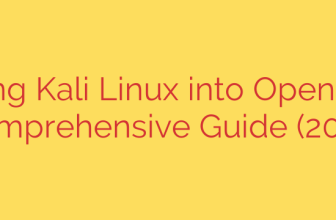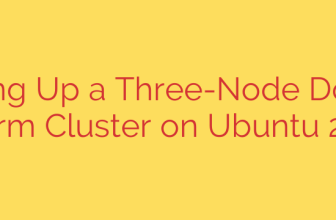
Major AWS Updates Unveiled: Enhanced Security, New Services, and Cost-Saving Features
Keeping up with the pace of innovation at Amazon Web Services can be a challenge, but staying informed is crucial for building secure, efficient, and cost-effective cloud infrastructure. This month brings a series of significant announcements, from groundbreaking new services to critical updates that enhance performance and security.
Here’s a breakdown of the essential updates you need to be aware of and how they can impact your cloud strategy.
Next-Generation Data Integrity: Amazon Quantum Ledger v2 Arrives
Data integrity and auditability are non-negotiable for applications in finance, logistics, and regulatory compliance. AWS has raised the bar with the launch of Amazon Quantum Ledger Database (QLDB) v2. This fully managed ledger database provides an immutable and cryptographically verifiable transaction log, making it virtually impossible for data to be altered or deleted without detection.
The second version introduces major performance enhancements, including faster transaction processing and improved scalability for high-throughput workloads. This makes it a compelling choice for systems that require a complete and provable history of all changes, such as:
- Supply chain tracking to verify the journey of goods.
- Financial ledgers for tracking transactions.
- Government and compliance systems requiring transparent data logs.
What This Means For You: If your application demands a perfect, auditable history of data changes, now is the time to evaluate QLDB v2. Its serverless architecture and enhanced performance can simplify development while providing a level of data integrity that traditional databases cannot match.
Unleash Performance: AWS Lambda Gains Native Rust Support
Performance and efficiency are paramount in serverless computing. In a major win for developers, AWS Lambda now offers native support for the Rust programming language. Known for its blazing-fast performance, memory safety, and minimal resource footprint, Rust is an ideal choice for compute-intensive and performance-critical functions.
Previously, developers had to use custom runtimes, but this first-class support streamlines the entire development and deployment process. Key benefits include:
- Lower Latency: Rust’s efficiency can significantly reduce function execution time and cold starts.
- Reduced Costs: Faster execution and lower memory consumption translate directly into lower Lambda bills.
- Enhanced Security: Rust’s strict compiler and focus on memory safety help prevent common bugs and security vulnerabilities.
Actionable Tip: Consider migrating performance-sensitive Lambda functions written in Python or Node.js to Rust. Workloads involving data processing, image manipulation, or real-time API backends are excellent candidates to see immediate and substantial performance improvements.
Strengthen Your Supply Chain: GuardDuty Adds Container Registry Threat Detection
Container security is a top priority for organizations using modern application architectures. Recognizing this, AWS has expanded the capabilities of Amazon GuardDuty to include threat detection for the Amazon Elastic Container Registry (ECR).
This is a critical “shift-left” security enhancement. GuardDuty now actively scans container images as they are pushed to your registry, identifying malicious code, known vulnerabilities, or suspicious package installations before they are ever deployed. By detecting threats at the source, you can prevent compromised containers from reaching your production environments.
Security Best Practice: This is an essential feature that should be enabled immediately. Navigate to the GuardDuty console and ensure that the new ECR protection feature is active in all your accounts and regions. This adds a powerful, automated layer of defense to your containerized workflows with minimal effort.
Slash Machine Learning Costs: New Savings Plans for Amazon SageMaker
Machine learning workloads can be a significant part of a company’s cloud spend. To help manage these expenses, AWS has introduced new Savings Plans specifically for Amazon SageMaker. This extends the familiar cost-optimization model to the entire suite of SageMaker services.
By committing to a consistent amount of SageMaker usage (measured in dollars per hour) over a 1-year or 3-year term, you can receive a substantial discount compared to on-demand pricing. This is ideal for organizations with predictable, long-term ML training or hosting needs.
Actionable Tip: Use the AWS Cost Explorer to analyze your historical SageMaker usage. The tool can provide recommendations for a Savings Plan commitment that maximizes your discounts based on your typical consumption patterns. This is a straightforward way to reduce your ML operational costs without changing your infrastructure.
Key Takeaways for Your Cloud Strategy
The latest wave of AWS updates reinforces a clear focus on security, performance, and cost-efficiency. From ensuring data integrity with QLDB v2 to proactively securing your container supply chain with GuardDuty, these tools provide tangible benefits. Meanwhile, native Rust support in Lambda unlocks new levels of performance, and SageMaker Savings Plans offer a clear path to optimizing your machine learning budget. By leveraging these new features, you can build a more robust, efficient, and secure cloud environment.
Source: https://aws.amazon.com/blogs/aws/aws-weekly-roundup-amazon-bedrock-aws-outposts-amazon-ecs-managed-instances-aws-builder-id-and-more-october-6-2025/








